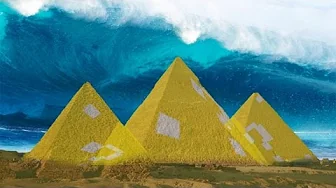Tsunami Warning
Subscribe - http://goo.gl/wpc2Q1 Can we predict future tsunami, and if not, why not? To know this we need to understand how tsunamis are created, the way they speed across oceans, and how they inflict such devastation. When the Tsunami hit on December 26th 2004 it killed over two hundred and fifty thousand people, destroyed thousands of homes and caused billions in damage. It was a global catastrophe and the world now knows the meaning of the word Tsunami. Naked Science is looking at the work of scientists who are out to discover which areas are most prone to a tsunami, and how past discoveries will help us in predicting them in the future, and the potential causes of tsunamis, underwater landslides, exploding volcanoes, earthquakes and even asteroids. A Geologist from The Institute of technology in California, ‘Sieh’, believes that the answer is in studying past tsunami events and has been working out in Indonesia for the past few years. He takes us to an island just off the west coast of Sumatra ‘Simeulue’, an island which has newly risen out of the ocean by up to 10 feet after the December 2004 earthquake. Just by looking at the uplifting coral reefs Sieh will be able to tell when the last tsunami happened and this could give an accurate prediction of when the next one might occur. Simeulue was also one of the closest islands to the fault line that ruptured in December 2004 yet no one on the island died. In 1900 a tsunami hit the island bigger than that of 2004 and killed many islanders in the process. Since that day the islanders have passed on the stories of this event through each generation and when the last earthquake occurred they knew exactly what to do. Run for the hills! This proves that education plays a big key in tsunami survival and that in passing stories and information to the next generation could save a lot more lives. But Indonesia is not the only place under threat from Tsunamis. The West Coast of America is vulnerable along the Cascadia Subduction Zone. This is a 680 mile long fault line that runs up the Pacific coast from Northern California to Vancouver Island, in Canada. The last such earthquake is thought to have occurred around 300 years ago. Although subduction earthquakes along here are rare when they do happen they can be massive, magnitude 8 or 9 on the Richter scale. The Indian Ocean earthquake was 9.1, the earthquake that destroyed San Francisco in 1906 was 8.3. so if this happened again there is no telling to what might happen.




















